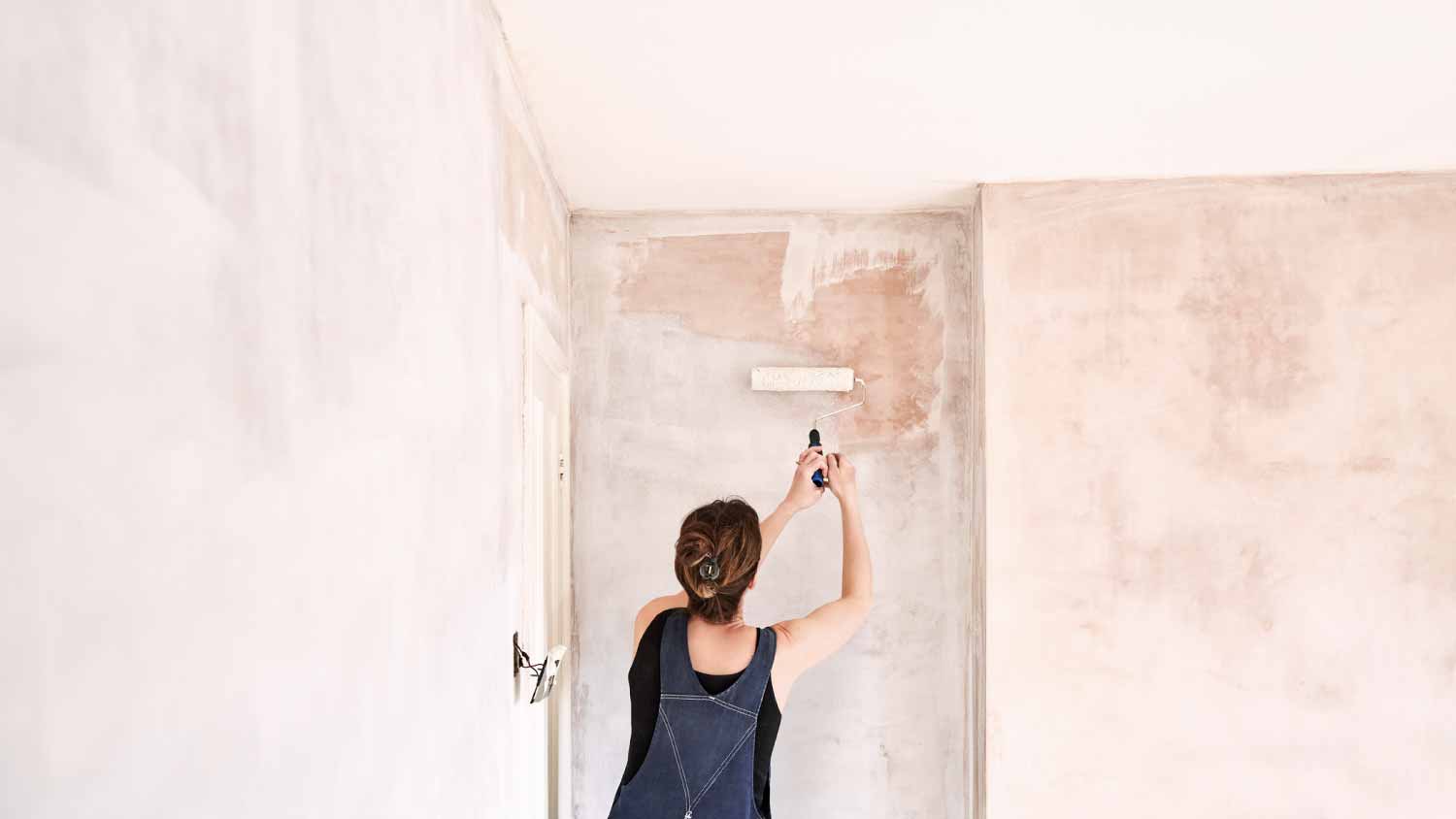
Limewash can add timeless texture to your living space. The cost to limewash interior walls depends on factors like surface area, materials, and prep work.
Learn the guidelines on tipping for a room well painted


Tipping isn’t necessary, but it’s always appreciated.
Tip the employees, if you can, rather than the boss.
In lieu of a cash tip, you can offer food and drinks.
Positive reviews and personal recommendations are often the best tips for a business owner.
Tipping the server at your favorite restaurant likely feels like second nature, but whether you should tip your local interior painter is more of a gray area. So, do you tip painters? Will they be anticipating a little something extra for their hard work? Here’s what to know about when—and how much—it’s appropriate to tip.
If we’re strictly addressing the obligation to tip, the short answer is: No, you don’t have to tip painters.
In most cases, your painters aren’t entering the job with the expectation of receiving a tip. Unlike many food service workers, painters’ hourly wages aren't reduced with the expectation that tips from customers will supplement their income. But in most cases, giving a tip is a welcome gesture, especially if you’re working with a team of employees rather than just one painter. If you feel compelled to tip for a job well done, go for it.

Depending on your project and who you hire, the cost to paint your home can get hefty, so going off a set percentage can put you way over budget. If you do have the budget for it, though, offering 3% to 5% of the total project cost is standard, which comes out to about $150 to $300 for the entire crew. For smaller projects, a flat amount of $20 to $60 per painter is appreciated. This is true whether you’re tipping interior or exterior house painters, as well as self-employed painters versus those who work for a larger company.
If you decide to tip your painter, you want to be clear about who will receive the tip and what service the gratuity covers. A simple oral or text conversation thanking them for their work and informing them of the tip should suffice.
You should also ask the pro’s preference for receiving the money—i.e., do they prefer cash, check, or an app like Venmo? Finally, it’s important to save the tip for the end of the job in case their performance changes, for better or worse.
First and foremost, if you weren’t happy with the service your painters provided, you are under no obligation to tip them. While accidents and small delays can inevitably happen, if you have big issues with the final product, tipping may not feel appropriate to you. Whatever the reason, you shouldn’t feel the need to dig deeper into your pocket for the sake of formality.
Aside from that, if you’re only working with a single painting contractor who owns their business, they’ll likely charge what they expect to make from the job upfront. They won’t anticipate anything extra, but again, it’s ultimately up to your discretion if you feel they went above and beyond.
If you’re not comfortable giving a cash tip, there are plenty of other ways to let your painters know how much you appreciate them. When working with a contractor who owns their business, often the best thing you can do is leave them a positive review. Recommend them to family and friends, and hop on sites like Angi to share your glowing feedback. You can also offer to be a reference for future clients. You’ll help them grow their business and gain more clients, so it’s like a tip that keeps on giving.
For a team of employees, you can also offer them food and drink as thanks instead of a tip. Offer to buy lunch, greet them in the morning with coffee and a box of doughnuts, or stock a cooler with bottled water and soda. Even a gesture as small as welcoming them to use your bathroom can go a long way.
If gratuity isn’t in your budget but you still want to thank your painter for a job well done, you can do so by offering them cold drinks, snacks, or a wonderful online review. Word of mouth praise also works wonders when it comes to helping a good pro find more quality jobs, so be sure to tell your friends and neighbors about the great job your painter did. Don’t worry if you can’t afford a tip—it’s not mandatory and not often expected when it comes to paint jobs.
While a painting project may be a straightforward task for most professionals, it still involves plenty of planning and attention to detail. According to Angi data, about 60% of homeowners who submitted a request to find a pro said they were ready to hire. That leaves 40% who are still in the planning and budgeting phase and want to better understand the timeline and costs involved for their project. Even if your plans aren’t nailed down, talking to a pro is still worthwhile so you can finalize your home project.
The deciding factor between hiring a pro or DIY painting will most likely be your budget. The average cost of hiring a painter is $1,100 for a standard-sized room or $2 to $6 per square foot. Painting the room yourself averages around $150 if you must purchase all the materials.
While painting a room yourself can save a substantial amount, you’ll want to consider the time costs. A local painter can tackle the prep work and painting more efficiently, so it’ll be up to you to decide if it’s worth paying more.
We all want quality, tip-worthy service from our painters, but unfortunately, this isn’t always a given. This is why it’s crucial to always do your homework before hiring a painter. Read online reviews or ask your friends and family for recommendations. If you don’t have someone specific in mind, get at least three written quotes to find the best deal.
Be sure to verify that your painting contractor is insured and licensed if your state requires it. Portfolios, estimated timelines, and payment structures are all good things to ask for as well. Taking these extra steps will help you get a beautiful, high-quality paint job and stellar service to back it up.
From average costs to expert advice, get all the answers you need to get your job done.

Limewash can add timeless texture to your living space. The cost to limewash interior walls depends on factors like surface area, materials, and prep work.

The cost to paint the interior of a house in Washington, D.C. depends on size, layout, type of surface, and more. Learn what factors can influence your total in this guide.

The cost to paint the interior of a house in St. Louis, MO depends on size, layout, type of surface, and more. Learn what factors can influence your total in this guide.

Wondering who to hire to strip paint or remove paint? Compare paint stripping contractors and lead abatement pros, and start your project with confidence.

When a ceiling has stains, you can follow a few steps for how to paint a water-damaged ceiling yourself—or a pro can fix the damage and paint for you, too.

Painting plastic requires the right paint to get the job done flawlessly. Check out 11 of the best paints for plastic to help you with your next project.